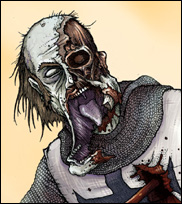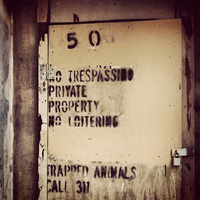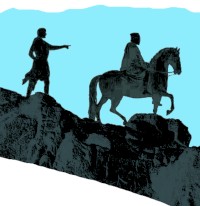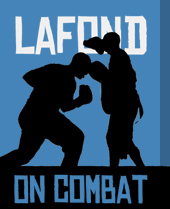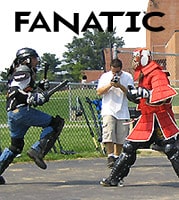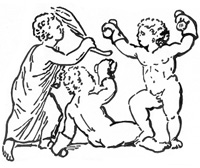Forgive me, ivory-tower haunting gods of secular academia, for I am a horror writer treading on your hallowed ground. What’s worse, is I thought I was a sports writer until three years ago.
First, in a world where alcohol, drugs and sex have been outlawed, and in which most forms of self-defense against unprovoked attacks are also crimes, I think we can put away the notion that anything meaningful could come from defining something as a crime.
The notion of crime is just an aspect of hierarchal aggression.
The assertions below, concerning the shape of the human condition, are based on the following:
1. A violent life in and out of the ring
2. A survey of Baltimore area residents in which I gathered 1,675 acts of violence, with 8 to 48 data points concerning each, conducted between June 1996 and May 2000
3. A reading of 1,152 books at the Peabody Conservatory between 1998 and 2001.
4. The research and writing of The First Boxers, available in print.
5. The reading of Grossman’s book On Killing in 2012
6. The reading of Marvin Harris’ Our Kind in 2003
7. The reading of O’Connell’s Of Arms and Men in 1993
8. The research and writing of Taboo You, in 2014, available in print.
Preconditions
Sources are cited according to their number above.
There are two kinds of violence, consensual, and predatory [2]. Most forms of consensual aggression are practiced by large herbivores. Those practiced by men are mostly ritualized into sporting forms.
No matter the form of aggression there are four violent expressions of aggression [5]: Combat, posturing [either threat or bluff], retreat, or submission.
No matter what form or expression aggression takes it has one of three social trajectories [2]: horizontal, hierarchal or heretical. These concepts will be illustrated by numerous examples and form the nexus of the chronological discussion of violence from 40,000 Y.B.P. to 2015. According to Harris [6] man did not fully form language function until 40,000 years ago. This is supported by the fact that the remaining archaic forms of humans in Europe, the Near East and Asia, who, unlike most fully modern humans had survived the Toba Super eruption 74,000 Y.B.P., were not eradicated by fully modern humans until after that date, by about 30,000 Y.B.P.
Man is best understood, not as an evolved primate, but as a tool-using predator [7]. Although I believe man to be an evolved primate that has conjured up the notion of his divine origin, I contend that man’s behavior is more in line with his own divine myth origins than with the behavior of chimpanzees or other great apes. Using weapons and cooperating in the demise of others with unprecedented sophistication has made man a globally disrupted force to other terrestrial life forms.
Man evolved to aggress as a group against a lone man-sized individual, the leopard, which was early man’s primary predator. Until the leopard’s reign of terror was ended man was no better than a chattering ape [8]. To the extent that we have any fossil evidence of the earliest hominids we can thank the leopard’s habit of dining in private. Humans are therefore uniquely equipped to deal with divergent behavior among their fellows. This ability to cultivate a powerful, cohesive tribal identity prepared man to eradicated and enslave rival groups in a way that lion prides, hyena clans and canine packs were never able to achieve.
The Point of the Spear
The resulting ability to construct—through language and tool use—coercive social hierarchies of seemingly limitless size, has at once taken advantage of the fact that most humans are not naturally equipped with the ability to kill another human [5], and also the fact that humans may be organized in a fashion that permits the will of an autarchy, oligarchy—or even a supposedly non-violent, pious elite—to use the entire body politic as a lever to project their will into the point of the spears held by the few men fitted to that purpose.
In ancient times an autarch would be within shouting distant of the spear-armed warriors, and even wield a weapon himself. But today, human language has realized its ultimate social potential, the formation of continent wide—and perhaps one day, global—consensus as to who shall command, wield, and receive, the point of the spear.
Imagine Alexander, a ferocious, genius-level killer, the greatest conqueror of the ancient world, in a time renown for despotism, shouting to his Foot Companions and Agrianians to take a gate of some Afghan hill fort.
The Consensus Drive
Now imagine that same gate, viewed on a closed circuit satellite feed on a TV screen in Washington D.C., by some sweetly smiling sissy politician out of Chicago, or by some drunken rich boy degenerate son of a war hero from Texas. Imagine that sissy, or that poorly spoken fool, taking that gate from the grim-faced, ass-raping killers guarding it for their patriarch?
That could never happen in a sane ancient world. But, in our time, the massive wealth generated by 300 million mind-numbed slaves of the most powerful Consensus Drive ever developed, may be directed to the cause. The soft vile creature sitting in his TV room may now give a command, and a chain of downward hierarchal pressure will concentrate and result in a single handful of men carrying more destructive power in their hands than Alexander’s entire 35,000 man force—which he could never crowd around that gate if he tried—would descend on that gate, and not only kill the defenders, but do so without waking the neighbors.
That is the power of hierarchal aggression, downward social pressure as lethal specialization tips the societal “spear” oat the point of contact with the social resistance.
Horizontal Aggression
When two persons, or two groups, both of whom are subject to the same hierarchy—or voluntarily subject to the same ethos—engage in violence, that is horizontal pressure that does not tax the system, and in many instances strengthens it. In medieval times horizontal aggressions occurred under the umbrella of the “Universal” Catholic Church. When enemy members of this hierarchy met in battle and brought their slaves along, they were glad to trample their own peasant levies under hoof, but would spare their counterpart for ransom. The 14th Century Battle of Grecy was the best example.
To understand the concept of horizontal aggression imagine children fighting each other rather than their parent, which would be heretical. When the parent beats the children for fighting, that is hierarchal aggression put to its purpose. The medieval European period is good for a study of violence as the three estates of man can be seen clearly for what they are, before they became obfuscated by the fourth.
The Three Estates
One way this was envisioned in the European Middle Ages was through the tools of the respective estates, Plough, Sword and Book.
The Third Estate were called many things, but was—and is—comprised of slaves to the first two estates. Keeping them in their life of misery was the job of the other two estates. 95% of humanity occupied The Third Estate.
The Second Estate was the nobility, primarily descendents of the last wave of conquering tribesmen. They fought each other mostly, to keep sharp, for those occasions when they had to fight the enemies of Christendom, but primarily, to keep in practice for slaughtering the slaves, should they rise, and they did.
The First Estate was the clergy, those who read and prayed, the mind control element of the upper class, who did more to keep the slaves in line with scores of holiday celebrations and promises of paradise everlasting in return for thee miserable toil of the present.
The Fourth Estate is supposedly the press, but is essentially media and academia combined, who would have The First Estate believe that the old three tier system is gone and that The Second Estate has the sole purpose of seeing to the welfare of The Third and that The First Estate ministers to the concerns of the afterlife for all.
The Lie of the Ages
In reality, The Fourth Estate has long ago supplanted The First Estate, and are now the priests who convince The Third Estate that The State is not an instrument of aggression, but the coddling mother of mankind. What is more, the media and academia have convinced The Third Estate that their rulers are not rulers at all, but simply their vote puppets, doing their collective bidding.
The lions must be jealous, the wolves befuddled, and the hyenas scratching their ears. That a handful of squishy apes could rule billions of more fit apes is amazing indeed.
Premise
40,000 Years from Home is an illumination of aggression in its three trajectories, two form variants and four expressions. My operating theory is that ritualized mutual combat is a sophisticated cultural adaptation to limit violence which developed 15,000 [4] years prior to civilization to limit violence within small groups, and now only serves as sporting rites, co-opted as distractions for the masses by the ruling class.
Horizontal violence among The Third Estate is now entirely lacking in violent ritual—such as two men fighting to settle a dispute as was common two generations ago—, with the vast majority of violence between humans in the same society now resembling predation by carnivores upon herbivores. View a mob attack video on YouTube and then view a documentary on lions and hyenas hunting, and you will see little difference in the nature of the attack as a cohesive action.
I have, over the past ten years, identified an accelerating devolution among the mass of urbanized humanity, with the majority adopting the doe-eyed role of the passive prey animal and the minority joining the hunt with increasingly frenzied and animalistic behavior.
Aggression Forms and Variants
1. Predatory [primary]
2. Consensual [secondary, vestigial cultural trace from the primal hunter-gatherer state, circa 20,000 Y.B.P.]
Aggression Expressions
1. Combat [fight]
2. Posture [most common form of aggression]
3. Retreat [flight]
4. Submission [most common form of defense]
A reading of 2 and 4 for what they are tells the story of Postmodern Man in terms of the actual relationship between the estates.
Aggression Trajectories
1. Horizontal [static]
2. Hierarchal [downward]
3. Heretical [upward]


